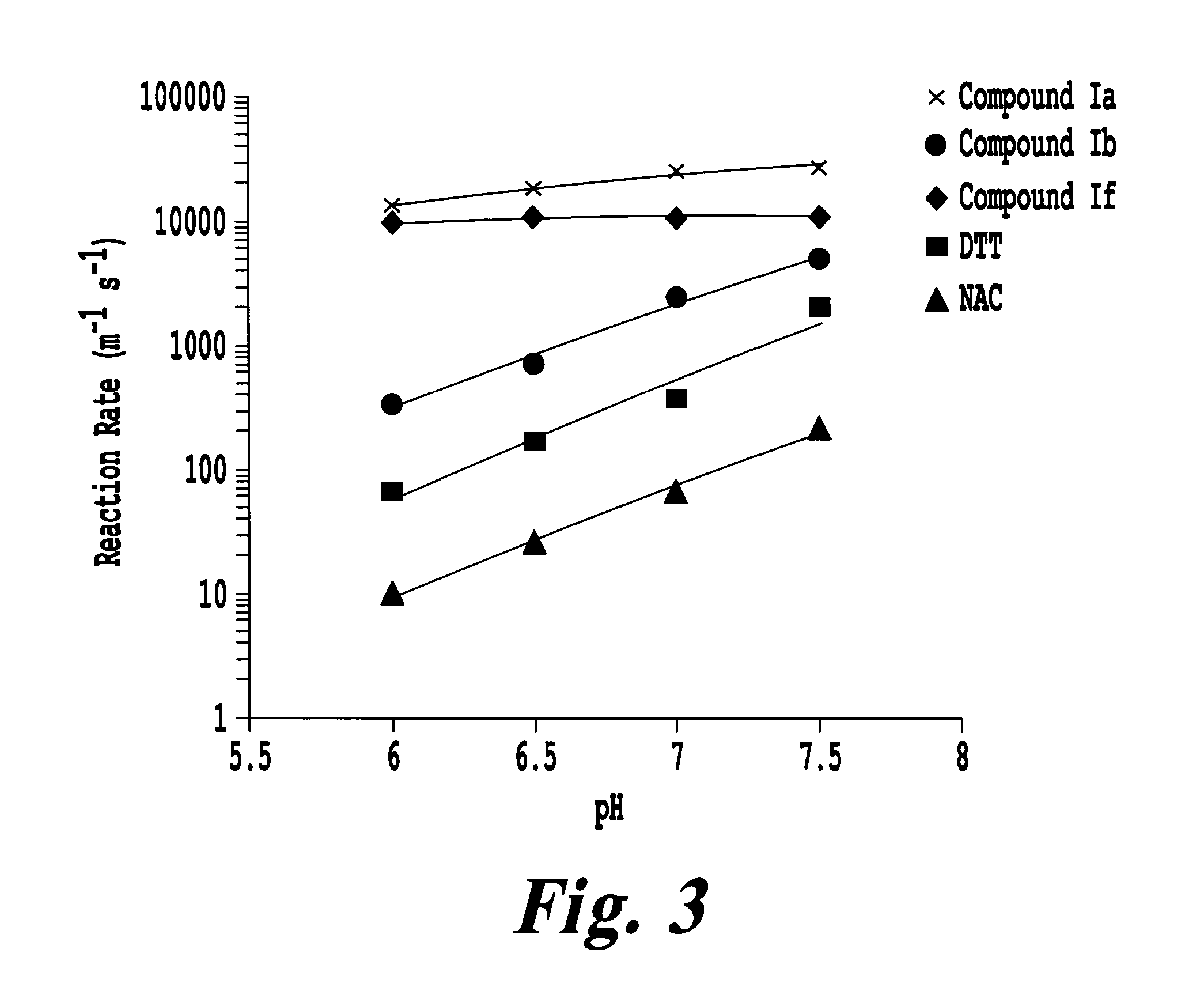Novel mucolytic agents
- Summary
- Abstract
- Description
- Claims
- Application Information
AI Technical Summary
Benefits of technology
Problems solved by technology
Method used
Image
Examples
example 1
[0216]The following example demonstrates the enhanced kinetics of phosphine disulfide reduction relative to NAC.
The kinetics of disulfide bond reduction can be quantitative measured using 5,5′-dithiobis-(2-nitrobenzoic acid) (DTNB or Ellman's Reagent). DTNB contains an internal disulfide bond, which when reduced, gives rise to two molecules of TNB that can be monitored by fluorescence at 412 nm. The reduction of DTNB by compound 1b, NAC, and DTT (dithiothreitol) was measured as a function of increasing concentrations of reducing agent with a fixed concentration of DTNB and pH (7.0). All compounds exhibited a dose-dependent increase in DTNB reduction kinetics, with compound Ib exhibiting the fastest reduction kinetics at all ratios of reducing agent to DTNB substrate (FIG. 2). The reducing kinetics of compounds Ia, Ib, If, DTT, and NAC were compared as a function of pH (FIG. 3). NAC and DTT displayed a pH-dependent increase in DTNB reduction, consistent with the increasing active S-f...
example 2
[0217]The following example demonstrates that the phosphine compounds tested are more potent mucus reducing agents than N-acetylcysteine or DTT.
The effectiveness of compounds Ia and Ib were compared to NAC and DTT. Saliva provides an easy sour of Muc5b, which is also a dominant airway mucin. Saliva samples were aliquoted and incubated with the indicated concentrations of reducing agents (FIG. 4). After a 30 minute incubation, the reducing agents were quenched by the addition of a 10-fold molar excess of N-ethylmaliamide (NEM). The mucus samples were separated by agarose gel electrophoresis and analyzed by western blot. Consistent with the findings in FIGS. 2 and 3, compounds 1a and 1b were more potent that the thiol-based reducing agents NAC and DTT. NAC did not produce any visual mucin reduction at concentrations up to 100 mM in 30 minutes as assess by a downward gel shift in the Muc5B bands. DTT reduced Muc5B in this experimental paradigm at concentrations ≧3 mM. Whereas compounds...
PUM
| Property | Measurement | Unit |
|---|---|---|
| Size | aaaaa | aaaaa |
Abstract
Description
Claims
Application Information
 Login to View More
Login to View More - R&D
- Intellectual Property
- Life Sciences
- Materials
- Tech Scout
- Unparalleled Data Quality
- Higher Quality Content
- 60% Fewer Hallucinations
Browse by: Latest US Patents, China's latest patents, Technical Efficacy Thesaurus, Application Domain, Technology Topic, Popular Technical Reports.
© 2025 PatSnap. All rights reserved.Legal|Privacy policy|Modern Slavery Act Transparency Statement|Sitemap|About US| Contact US: help@patsnap.com



